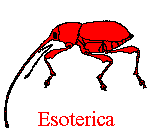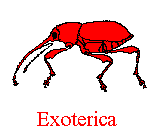Military Mix and Match
I’m a week late on this, but it’s an appropriate subject for Memorial Day (not quite over yet), so I’ll go ahead and post it.
John Krenson, guest-posting on Donald Sensing’s One Hand Clapping, has a long and fascinating post on the State Partnership Program (SSP), which aims “to link the National Guards of the States of the United States with Ministries of Defense of the emerging democratic nations of Central and Eastern Europe and Eurasia in cooperative activities of mutual benefit”. I’m embarrassed to admit that I’d never heard of it. The match-ups are mostly one-to-one, though in a few cases one state is linked to two countries or one country to two states. What I find intriguing is the matchup between specific states and countries:
- Of course, there are constraints of size: larger National Guards are matched with larger armies, and vice versa. If Ukraine is matched with California, and Macedonia with Vermont, it could hardly be the other way around.
- Some seem to have been paired up by relative proximity: Hawaii and Guam with the Phillipines, Alaska with Mongolia (a long way away, but still closer than any other country on the list), Florida with Guyana and Venezuela, Puerto Rico with the Dominican Republic (right next door) and Honduras.
- The last also has language advantages: with so many Latin American countries on the list, it would have been silly to pair Puerto Rico with Moldova or Armenia.
- In some cases, there are ethnic connections. I doubt it is accidental that Illinois, Indiana, Ohio, Michigan, and Pennsylvania are matched up with Poland, Slovakia, Hungary, Latvia, and Lithuania, respectively, though the exact pairings could have been different. Having plenty of immigrants and descendants of immigrants from the matched-up nation can’t hurt. The same may apply to Washington D.C., matched with Jamaica, and Texas and Nebraska, both matched with the Czech Republic.
- In some cases, the climate and geography are similar. No doubt Kazakhs and Turkmens feel a bit more at home in sparsely-populated, arid mountain states like Arizona and Nevada than Thais or Panamanians would. On the other hand, I imagine Ghanaians find North Dakota a huge change from home, even in the summer (all three weeks of it).
- Finally, one match-up was inevitable. Yes, the two Georgias (post-Soviet and post-Confederate) are matched up.

